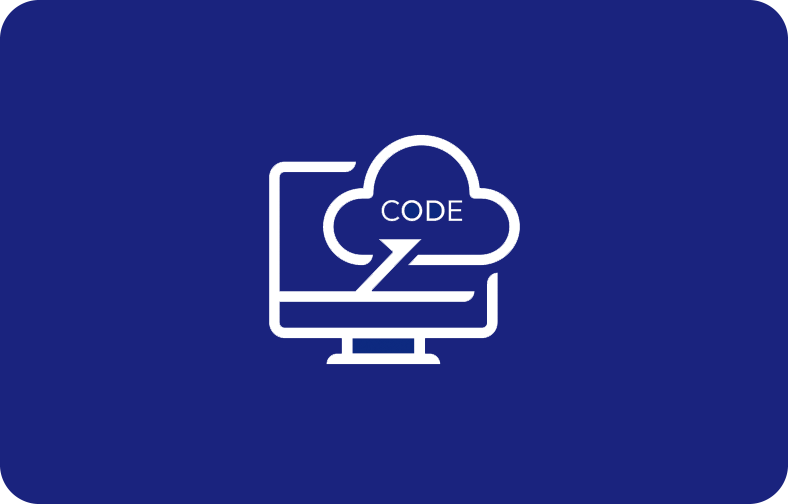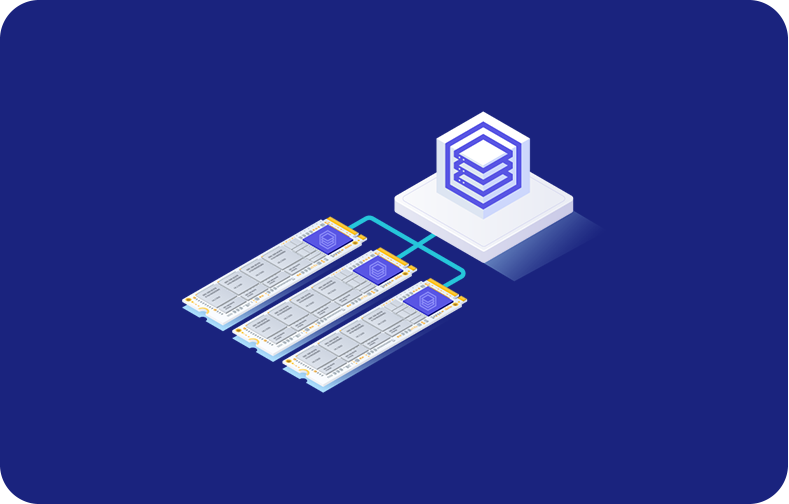Apache Tomcat: What is it and How Does it Work?

Regarding Java web application servers, Apache Tomcat is a prominent player in the market. This free and open-source program includes basic Java specifications like Jakarta Servlets and Jakarta Server Pages (JSP).
As a result, Tomcat is capable of delivering a runtime environment that is both secure and fast, catering exclusively to the needs of Java web applications. Tomcat's scalability accommodates various deployment scenarios, including standalone servers and mission-critical enterprise infrastructures.
The Blog article establishes the Apache software foundation for a more comprehensive analysis of Apache Tomcat, encompassing its architectural design, deployment configurations, and the essential advantages it provides to system administrators and developers.
What is Apache Tomcat?
Apache Tomcat, a multifaceted Java servlet container, is an industry cornerstone in Java web development. The function of this component is crucial in overseeing the execution environment of Java servlets, enabling the dynamic creation of web content, processing incoming requests, and coordinating a multitude of web server activities.
Java servlets, which are implemented as Java classes, essentially augment the functionalities of web servers by imposing rules on their request processing and response to client interactions.
Although Apache Tomcat is frequently compared to an application server because of its ability to serve dynamic content, it does not strictly conform to the characteristics of a web server or an application server. Conventional web servers are designed to distribute inert content, such as media files and HTML pages.
On the other hand, application servers demonstrate exceptional proficiency in providing dynamic content, frequently facilitating the operation of intricate web applications that incorporate interactive functionalities and personalized experiences. Although Tomcat is more closely associated with application servers due to its capability to handle dynamic content, it functions as a Java servlet container at its core.
Although Apache Tomcat is similar to an application server, it does not possess certain essential features in complete application servers. This may restrict its ability to handle enterprise-level requirements.
It enhances its utility in Java-based web application deployment scenarios by providing essential services such as resource allocation and security administration. The flexibility of this system enables it to operate independently as a web server when required, thereby emphasizing its multipurposeness within the Java ecosystem.

Core Apache Tomcat Components
Apache Tomcat functions via a collection of intricately interconnected elements, with each component fulfilling a distinct function in the execution of web requests and provision of dynamic content. It is essential to comprehend these fundamental elements to grasp Tomcat's functionality and configuration fully.
The Servlet Container Catalina
Catalina, frequently called the "engine" of Tomcat, serves as the servlet container where the lifecycle of every servlet deployed within Tomcat is managed. Conforming to the Jakarta Servlet specification guarantees seamless integration with an extensive collection of Java web applications.
Catalina manages servlet-related operations such as initializing, loading, and invoking service methods in response to incoming queries. Additionally, resource aggregation and thread management are implemented to ensure efficient execution.
Coyote: The Component of the Connector
Coyote serves as an intermediary connecting Tomcat with the external environment. It is a pluggable connector component that primarily supports HTTP/1.1, among other protocols. Coyote is responsible for receiving inbound HTTP requests, parsing the body and headers, and forwarding them to Catalina, the designated servlet container, for further processing.
On the contrary, Coyote converts a response produced by a servlet into the HTTP format before returning it to the client. By leveraging the AJP protocol, this adaptable connector architecture enables Tomcat to integrate with various web server environments, including Apache HTTP Server.
Jasper: The JSP Engine
The technology known as Java Server Pages (JSP) provided by Jasper enables developers to incorporate Java code into HTML pages. Jasper, an integral component of Tomcat, is responsible for processing JSP files. Upon receiving a request for a JSP resource, Jasper dynamically converts the JSP file into a servlet class.
After that, Catalina loads and manages this servlet class in the same manner as any other servlet. This methodology streamlines the web development process by enabling programmers to combine dynamic Java code and HTML in a single file.
How Does Apache Tomcat Work?
Apache Tomcat excels at handling web requests and producing dynamic content. Here's a breakdown of the main processes required in this procedure:
1. Client Initiates Request: At the client's request, a user engages with a web page hosted on a Tomcat-powered server. The user's web browser sends an HTTP request that includes the file it wants (for example, a JSP page or a servlet). This request is routed to the web server hosting Tomcat.
2. Connector Intercepts Request: When an HTTP request arrives, the Apache web server transmits it to Tomcat's Coyote connector. Coyote listens for requests on certain ports, most commonly port 8080 for HTTP traffic.
3. Request Parsing and Routing: Coyote parses the HTTP request headers and body to extract essential information such as the requested URL, HTTP method (GET, POST, etc.), and any data in the request body. Coyote detects the right web application within Tomcat based on the URL and settings.
4. Catalina Takes Over: Coyote transfers the parsed request information to the Catalina servlet container. Catalina locates the matching servlet or JSP page within the specified web application.
5. Processing the Request: Catalina calls the proper service method within a servlet's class while processing the request. The servlet executes the request logic, communicates with databases or other resources as required, and returns a response. Catalina sends request data to the Jasper JSP engine.
6. JSP Compilation (if applicable): Jasper automatically converts the JSP file into the relevant servlet class if the requested resource is a JSP page. This servlet class encapsulates the logic specified in the JSP.
7. Servlet Execution: Once the servlet class is accessible (whether pre-compiled or created by Jasper), Catalina loads and handles its lifecycle. The servlet's service method is called, allowing it to interact with the request data and return a dynamic response.
8. Response Generation: The servlet API generates the response content, which could be HTML, JSON data, or another format. This response could also include modifying HTTP headers or cookies.
9. Response Delivery: Catalina receives the servlet's response data. Coyote then transforms the response to HTTP format, including headers and the response body.
10. Sending Response to Client: Coyote sends the structured HTTP response to the web server, relaying it to the user's web browser. The user's browser understands the response and displays the corresponding content.
This optimized procedure demonstrates how Tomcat effectively accepts web requests, runs Java servlets and JSP pages, and delivers dynamic information to web applications.
Advantages of Using Apache Tomcat
Apache Tomcat's extensive use originates from its compelling benefits for developers and system administrators. Here's a closer look at the main benefits it provides:
For developers
-
Free and Open Source: Tomcat is free and open source, which eliminates licensing fees and fosters a large, active developer community. This translates into easily accessible documentation, tutorials, and substantial online assistance.
-
Simple and Lightweight: Tomcat is characterized by its straightforward configuration and lightweight design, which render it well-suited for development environments and expedited prototyping. Developers can rapidly deploy and test web applications by bypassing the need to manage complicated server configurations.
-
Optimal Java Integration: Tomcat, a platform focused on Java, effortlessly integrates with the Java development ecosystem. Java enables programmers to construct robust web applications without requiring them to acquire new technologies for server-side development.
-
Mature and Reliable: Tomcat Server has established itself as a reputable and dependable entity, showcasing its many decades of experience in these areas. This maturity reduces the danger of experiencing unanticipated issues in production scenarios.
-
Support for JSP: BIt allows the developers to embed the Java code within HTML pages easily. The integration of the Tomcat engine with JSP processing effectively mitigates the intricacies of software development.
For System Administrators
-
Scalability and Performance: Tomcat is excellent at handling large amounts of traffic. Its modular architecture enables installations to scale from single servers to clustered environments for optimal performance and redundancy.
-
Security Features: Tomcat provides strong security features, such as user authentication, access control, and secure communication protocols. This built-in security protects web apps from potential attackers.
-
Platform independence: Tomcat works flawlessly with various operating systems, including Windows, Linux, and macOS. This adaptability makes deployment easier across a variety of server setups.
-
Easy Management: Tomcat's configuration files are well-defined and easy to manage. A thriving community provides tools and resources for monitoring and maintaining Tomcat servers.
-
Integration with Apache HTTP Server: Tomcat works seamlessly with the widely known Apache HTTP Server using the AJP protocol. This enables managers to combine the strengths of both servers to create a comprehensive web-serving architecture.
By combining these benefits, the Apache server offers a compelling value proposition to both developers and system administrators. Its simplicity, extensive functionality, and emphasis on Java make it an ideal choice for running various web applications.
Common Apache Tomcat Use Cases
Due to Apache's adaptability and comprehensive functionality, Tomcat has become an indispensable technology for deploying Java web applications in various scenarios. The following are some of the most prevalent use cases for Tomcat:
Deployment of Websites and Web Applications
Apache Tomcat is fundamental in implementing websites and web applications in many industries. This technology's extensive adoption and recognition are due to its smooth integration with Java-based systems, which renders it an attractive option for developers seeking scalable and effective solutions.
Tomcat's ability to integrate with Java servlets empowers developers to augment the capabilities of web servers. This integration facilitates the dynamic production of web content and the streamlined management of client requests.
Server Performance Enhancement
App developers can attest to the fact that Apache Tomcat has the capability of substantially decreasing server launch time, which is one of its most notable characteristics. This enhancement optimizes operational processes and positively impacts the overall user experience.
Through the reduction of server initialization time, Tomcat effectively manages resources and guarantees timely responses to incoming requests, consequently enhancing the overall efficacy of the server.
Bug-Free and Compliant Applications
Implementing Apache Tomcat is crucial for assuring the development of bug-free applications and upholding compliance standards. Tomcat facilitates the delivery of high-quality applications to end-users by aiding developers in streamlining the development process through its dependable performance and comprehensive features.
Tomcat ensures an error-free runtime environment for Java servlets, which promotes comprehensive testing and debugging. Consequently, applications developed with Tomcat are more dependable and compliant with industry standards.
Capacity for Scaling E-Commerce
Prominent online retailers like Walmart depend on Apache Tomcat to manage a substantial quantity of transactions daily, demonstrating its capacity to facilitate swift scalability and provide outstanding online experiences. The adaptability and dependability of Tomcat enable organizations to accommodate expanding user requirements without compromising performance.
Through the implementation of scalable mechanisms and effective resource management, Tomcat empowers e-commerce platforms to effectively handle increases in traffic while maintaining system stability and user satisfaction.
Budgetary and Cost-Effectiveness Optimization
Apache Tomcat presents itself as a financially viable substitute for proprietary, for-charge server alternatives, rendering it an appealing selection for enterprises seeking to streamline expenditures while maintaining functionality.
Prominent organizations, including Weather.com, have effectively implemented Tomcat, resulting in significant financial benefits and improved capacity to manage website traffic. By capitalizing on the comprehensive functionalities of Tomcat at a reduced expense, organizations can optimize resource allocation and allocate funds towards alternative strategic endeavors.
Integration in Development Environments with Optimal Flow
Apache Tomcat provides a streamlined workflow for resource-constrained DevOps teams through its seamless integration and effortless deployment in development environments that utilize numerous Java-based technologies.
Tomcat's adoption is facilitated by its uncomplicated setup procedure and minimal configuration prerequisites, which permit development teams to concentrate on fundamental tasks. Compatibility with a wide range of development frameworks and tools contributes to Tomcat's desirability by expediting the software development lifecycle and facilitating collaboration.
Deployment and Configuration Simplicity
Deploying applications using Apache Tomcat is uncomplicated, necessitating only a small amount of configuration and setup. Developing and launching Java web applications is as straightforward as installing the servlet container and transferring the application files to the specified directory.
The streamlined process enables agile development practices and shortens time-to-market, empowering teams to iterate and effectively adapt to evolving requirements swiftly. Moreover, the extensive documentation and community support Tomcat provided assist developers in effectively managing configuration obstacles and enhancing deployment procedures.
How to Install Tomcat on Windows?
Apache Tomcat offers two primary installation methods for Windows environments, but today, we will be using 1st method Windows Service Installer:
-
Install Tomcat Using the Windows Service Installer
-
Install Tomcat Using the zip Archive
Download Tomcat for Windows
First, let's download the Tomcat. Please visit the official Apache Tomcat website and proceed to the "Downloads" section. Determine the most recent stable release of Tomcat.

Select the right "Windows service installer" for your system architecture (32-bit or 64-bit) from the "Binary Distributions" section. Install the installer application.

Using the Windows Service Installer
Utilizing the Windows Service Installer, proceed with the tomcat installation as detailed below.
1. To begin the installation procedure, open the Windows Service Installer file you downloaded.
2. To continue, click Next on the Tomcat Setup welcome screen.

3. After reading the License Agreement and selecting I Agree to move on to the next stage, you must accept the terms.

4. To guarantee that the procedure installs the Tomcat Host Manager and the Servlet and JSP sample web apps, pick Full from the dropdown menu on the Tomcat component selection page. Alternatively, click Next by default while maintaining the Normal installation type.

5. Setting up the Tomcat server is the next step. For example, select a different connection port or log in as the Administrator. Click Next to move on to the next step after you're done.

6. You must input the entire path to your system's JRE directory in the following step. If you have already configured the Java environment variables, the wizard will complete this for you. To move on to the next step, click Next.

7. Click Install after selecting or preserving the default Tomcat server install location.

8. When the installation is complete, check the option to launch Apache Tomcat and begin the service. You can view the Readme file by checking the Show Readme option. Click Finish after the installation is finished.

The appearance of a popup window launches the Tomcat service. Upon completion of the process, the window automatically shuts. It has now been successfully installed to run the Apache Tomcat web server.
Check if the Apache Tomcat Service Is Running
When Tomcat is installed with the Windows Service Installer, it is installed as a Windows service that launches automatically upon boot. Follow the instructions below to ensure that Tomcat is launched as a Windows service.
Step 1: Look for Services in the Start menu.
Step 2: Choose the Service outcome.

Step 3: The Apache Tomcat service can be located in the Services window. The status column provides information regarding the service's operation. To initiate or terminate the service, utilize the Stop or Restart icons on the toolbar or the left-hand side of the service list.

Select Properties from the Tomcat service's right-click menu to modify the service initialization configuration.
Step 4: Select the Startup type from the drop-down menu in the Properties window to determine how the Tomcat service will be executed:
-
Automatic (Start Delay): Service activation occurs immediately after boot. Delaying the server's launch provides security and performance benefits.
-
Automatic: Commences the service automatically upon system startup.
-
Manual: Only if Windows or another service requires it, or when invoked, does the service commence.
-
Disable: Prevents the service from starting despite any attempts to do so.

To confirm your changes, click OK.
Power Up Your Java Development with VPSServer
Are you ready to accelerate your Java web application development now that you know Apache Tomcat's capabilities? VPSServer provides stable and scalable VPS hosting tailored for Tomcat and standalone Java application.
Our VPS options offer the right power, flexibility, and control. You'll have plenty of resources to run Tomcat smoothly, full root access for complex configuration, and the opportunity to customize your VPS. Pre-installed Java versions and 24/7 Tomcat and server support simplify the process at VPSServer. Visit VPSServer today to learn more about our VPS hosting plans and maximize Apache Tomcat Java development.
Conclusion
Apache Tomcat has solidified its position as a fundamental technology for deploying Java web applications. Its adaptability accommodates various situations, including integration of components into complex application server environments and operation as standalone development servers. Given its comprehensive functionality, open-source architecture, and user-friendly interface, Tomcat is an appealing option for developers and system administrators.
Frequently Asked Questions
What's the benefit of combining Tomcat with Apache HTTP Server?
Reverse proxy with Tomcat Tomcat can serve static files off the disk (and offers the APR library for doing so more efficiently). Still, it's also quite common to combine Tomcat with the flagship Apache web server (httpd) for static files.
How do IDEs like NetBeans or IntelliJ streamline deployment with Tomcat?
If you are using an IDE for development like NetBeans or IntelliJ, you just need to configure your IDE to use the TomCat directory, and it will start and stop the service and deploy your app.
How to Restart Tomcat?
To restart Tomcat on Windows, use the Services Management Console (search for "services.msc") and find "Tomcat" to restart. On Linux/Solaris, navigate to Tomcat's bin directory (often /usr/local/tomcat/bin) and run ./shutdown.sh followed by ./startup.sh.












